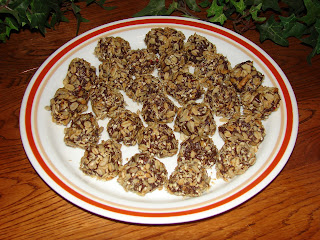 Three books that can help in meal planning.
Three books that can help in meal planning.The New Year is just a few short days away. Many will be making New Year’s resolutions. They may include weight loss, better nutrition, getting more organized and sticking to a budget.
To help keep these resolutions we propose planning and making meals in advance. This will help achieve all the above goals and also will save time and make meal time something to look forward to.
With busy schedules families often run out of time to plan nutritional meals much less do it on a budget. There are cookbooks that have suggestions, recipes, menus, shopping lists and more that make this doable.
Cookbooks are tools to be used to make the job easier. There are three that we have used to help us come up with our own style that is a combination of methods they suggest.
“Once-a-Month Cooking” by Mimi Wilson and Mary Beth Lagerborg gives menus, shopping lists, recipes and instructions on how to prepare meals for two weeks or a month at a time. This method is best if there are two or more people working together. We have used this method and it is a lot of work up front but the reward comes when all we had to do was defrost and heat meals that were already assembled.
“Don’t Panic-Dinner’s in the Freezer” by Susie Martinez, Vanda Howell and Bonnie Garcia focuses on preparing one or two meals at one time in multiples of two, four or six. Each recipe in the book has the ingredients listed to make two, four or six meals at a time. Then after it is cooked it can be divided that many times and frozen. That way one meal can be used that day and the others will be ready when needed.
“The Cook It and Freeze It Book” by Margaret Deeds Murphy has information on how to package different types of food for freezer storage as well as recipes that can be made and frozen. It also gives suggested length each item can be stored in the freezer.
Most of the time we make double or triple the amount we need for a meal and freeze the extra meals. We also do things like make a big pot of beans or a big roast that can then be used to make several different recipes.
About a month before our walnut harvest time we push to do more of a once-a-month type plan where we can have enough meals to last us through harvest. That way when we come in from the orchard at night tired from the day’s work all we have to do is heat up dinner and eat.
This year we ran a little short of our desired goal. There was another alternative we decided to use. In Red Bluff there is now a business called “Dinner My Way.” They have all the ingredients needed for 14 different recipes all ready to be assembled. We ordered online the meals we wanted and made reservations to go in and assemble them. In about an hour we had the additional meal we needed put together and ready to freeze. Information about all they offer is available at dinnermyway.com.
Many families have children in sports and other after school activities. That along with both parents working can make it hard to prepare meals that are nutritional as well as meet the budget. Getting the entire family to participate in a meal preparation plan will make it possible to have meals that meat the nutrition and budget goals.
When one person of the family is to be the main one responsible for making the meals, the easiest way is to make multiple batches on one meal and then divide it to be frozen for later meals. A good plan is to work up to cooking only one meal a week and use previously made meals the rest of the week.
Do not be afraid to try different methods. After trying the different ones you will be able to customize a plan that works for your family. The goal should be to make meal planning less stressful.




















